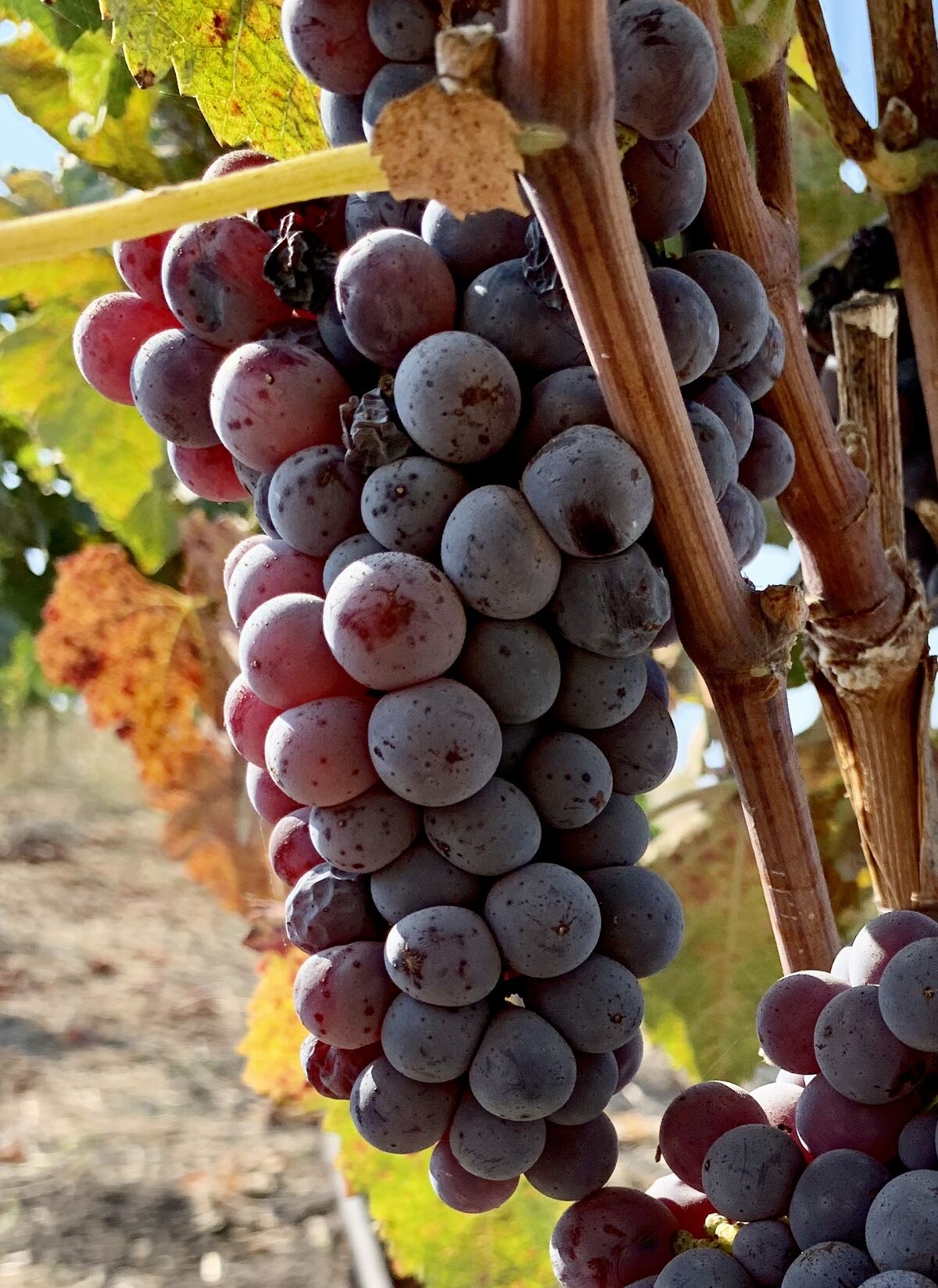Muscardin
Muscardin is a rare red Rhone grape, apparently never found anywhere outside the Rhone and planted sparingly even there. It makes a fresh, floral red when vinified, low in alcohol and with spicy notes of red fruit and green herbs. Its arrival at Tablas Creek in 2019 completed the Beaucastel Chateauneuf-du-Pape collection.

History
Muscardin is rare nowadays, and it appears never to have been very common, or found anywhere outside the Rhone. Its first mention in the historical record from 1895 talks about it being one of the "old southern grape varieties", along with Grenache, Piquepoul, Tinto, Terret noir, gris and blanc, Counoise, Vaccarese, Clairette, and Picardan. Its combination of relatively low vigor, pale color, and sprawling growth appears to have been three strikes against it in the period after Phylloxera, and in 2009 there were just 11 hectares (27 acres) in Chateauneuf du Pape, and less than that in the rest of France. Nevertheless, it is recognized in the official Chateauneuf-du-Pape regulations as a distinct grape, and the Perrins have been one of its advocates, valuing the wine for its freshness and floral lift. When we decided that we wanted the complete collection of Chateauneuf-du-Pape varieties in 2003, our Muscardin cutting came from the Beaucastel estate.
The origin of Muscardin's name is obscure, but the one thing that practically everyone agrees with is that it has nothing to do with Muscat or Muscadet. And the grape's scarcity (it doesn't even appear in Viala & Vermorel's seminal 1905 Ampelographie) means that there is just not that much literature out there on this rare grape. So, we really are breaking new ground here.
The grape did not have an easy time getting into California either. We took cuttings from Beaucastel in 2003 along with Picardan, Terret Noir, Cinsaut, Vaccarese, Bourboulenc, and Clairette Blanche, and all entered quarantine at U.C. Davis at the same time. But while the other grapes were released to us after one, two, or three rounds of virus cleanup, Muscardin took four separate rounds and wasn't released to us until 2018.
Muscardin in the Vineyard & Cellar
In order to speed up our production of this last grape, we made the decision to graft the 250 buds we were able to secure onto existing vine stock. About 50 of those buds were grafted onto rootstocks that we planted in 2018, with the other 200 grafted onto a few surplus rows of 20-year-old Grenache Blanc. We got our first tiny harvest in 2020.
There is a great quote from Baron Le Roi of Chateau Fortia that John Livingstone-Learmonth recounts in his 1992 book The Wines of the Rhone that explains Muscardin's appeal:
"You know, we would be better off here if we replaced the Cinsault with the Muscardin. The Muscardin doesn't produce a lot, makes wine of low degree and spreads out over the soil, preventing tractors from passing freely between the vines, all of which combine to put people off it. But I believe that it gives a freshness on the palate and helps the wine to achieve elegance."
Muscardin both emerges from dormancy and ripens early, more or less in sync with Syrah. It is moderate vigor, and produces pale purple clusters of above-average size grapes. These grapes produce wines that are pale in color but carry bright acids and noteworthy herby grip. Its small quantities so far have meant that we've had to vinify it in small open-topped microfermenters and age it in a single neutral barrel. In its first few vintages we included it in our Le Complice blend, where it served a similar role to Terret Noir. Since 2023 we have bottled Muscardin on its own.
Aromas and Flavors
Muscardin's pale color, floral and pomegranate notes, and herby grip remind us of Terret Noir, although it shows a bit more body and less tannin than Terret. It has aromas of aromatic bitters, spice cabinet and potpourri, medium body, red fruit, bright acids, and a spicy finish. As for aging, Muscardin is reputed to be prone to oxidation, like Counoise, so it may well be something best drunk young. We look forward to finding out, and sharing our discoveries with you!
This article originally appeared in one of our newsletters. Each newsletter, we spotlight the history and characteristics of one of our Rhone varietals. You can sign up for our mailing list.
You can view a one-minute summary of Muscardin on our YouTube page.
You can go back to the summaries of the different Rhône grape varietals.